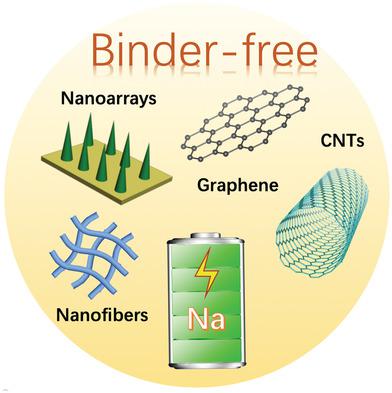当前位置:
X-MOL 学术
›
Adv. Mater.
›
论文详情
Our official English website, www.x-mol.net, welcomes your
feedback! (Note: you will need to create a separate account there.)
Binder-Free Electrodes for Advanced Sodium-Ion Batteries.
Advanced Materials ( IF 27.4 ) Pub Date : 2019-02-27 , DOI: 10.1002/adma.201806304 Ting Jin 1 , Qingqing Han 1 , Lifang Jiao 1
Advanced Materials ( IF 27.4 ) Pub Date : 2019-02-27 , DOI: 10.1002/adma.201806304 Ting Jin 1 , Qingqing Han 1 , Lifang Jiao 1
Affiliation

|
Sodium-ion batteries (SIBs) have recently emerged as one of the favored contenders for use in medium and large-scale stationary energy storage owing to the abundance of the resources required to fabricate them, their low cost, and the fact that have properties similar to equivalent Li batteries. However, their development also faces challenges such as poor cycling stability and unsatisfying rate performance. In traditional electrodes, binders are commonly used to integrate individual active materials with conductive additives. Unfortunately, binders are generally electrochemically inactive and insulating, which reduces the overall energy density and leads to poor cycling stability. Therefore, binder-free electrodes provide great opportunity for high-performance SIBs in terms of both improved electronic conductivity and electrochemical reaction reversibility. This Progress Report provides an overview of the recent progress in binder-free electrodes for SIBs. It focuses on the current challenges of binder-free electrodes and provides an outlook for their future in energy conversion and storage.
中文翻译:

适用于高级钠离子电池的无粘合剂电极。
钠离子电池(SIB)最近成为中大型固定储能器的首选竞争者之一,这是由于制造它们所需的资源丰富,成本低以及具有类似特性的事实相当于锂电池。然而,它们的开发还面临诸如循环稳定性差和速率性能不令人满意的挑战。在传统的电极中,粘合剂通常用于将单个活性材料与导电添加剂结合在一起。不幸的是,粘合剂通常是电化学惰性的和绝缘的,这降低了总能量密度并导致较差的循环稳定性。所以,从提高电子电导率和电化学反应可逆性两方面来看,无粘结剂电极为高性能SIB提供了巨大的机会。该进展报告概述了用于SIB的无粘合剂电极的最新进展。它着眼于无粘合剂电极的当前挑战,并展望了其在能量转换和存储方面的未来。
更新日期:2020-01-22
中文翻译:

适用于高级钠离子电池的无粘合剂电极。
钠离子电池(SIB)最近成为中大型固定储能器的首选竞争者之一,这是由于制造它们所需的资源丰富,成本低以及具有类似特性的事实相当于锂电池。然而,它们的开发还面临诸如循环稳定性差和速率性能不令人满意的挑战。在传统的电极中,粘合剂通常用于将单个活性材料与导电添加剂结合在一起。不幸的是,粘合剂通常是电化学惰性的和绝缘的,这降低了总能量密度并导致较差的循环稳定性。所以,从提高电子电导率和电化学反应可逆性两方面来看,无粘结剂电极为高性能SIB提供了巨大的机会。该进展报告概述了用于SIB的无粘合剂电极的最新进展。它着眼于无粘合剂电极的当前挑战,并展望了其在能量转换和存储方面的未来。











































 京公网安备 11010802027423号
京公网安备 11010802027423号